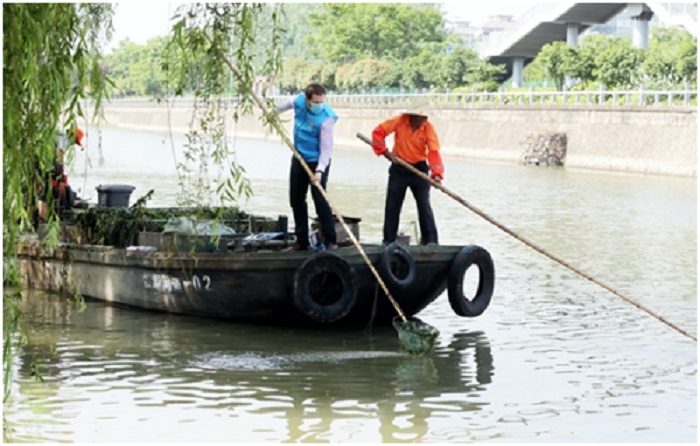



By Pan Xutao, People’s Daily Overseas Edition
“Will the Qinglongqiao River, which has been flowing for 500 years near our village, keep flowing for another 500 years?”
That is a question raised by Xie Ling in February 2018, who then had just took office as the Party head of Zhangzhenqiao village in Wuxi, East China’s Jiangsu Province, and a “river chief” of the Qinglingqiao river.
She came to the village with a plan provided by Wuxi Municipal Design and Research Institute Co., Ltd., under which many unapproved riverside structures in the village should be demolished.
“The chicken sheds, duck sheds and tofu workshops by the river have caused heavy pollution and some sections of the river even began to stink,” Xie said, adding that “We have no choice but to remove these structures.”
Xie’s proposal was immediately rejected by Hu Rongqing, a villager who built a livestock farm near the river. “My family depend on the farm for a livelihood,” he argued.
However, Hu was opposed by another villager who said his business had intensively polluted the environment of the village. Soon, other villagers chipped in, starting a heated debate.
Then, the village committee director sent for Hu’s cousins to help persuade him. Under their persuasion, Hu gradually calmed down. Later, Xie promised to find a job for Hu to dispel his worries over the source of income.
Hu pulled down his farm half a month later. With the help of Xie, he secured a job at Jiangsu Wenhui Steel Engineering Co., Ltd., earning an annual income of nearly 100,000 yuan (about $14,283). Recently, the man has become more energetic and motivated as his boss promised to raise his salary.
Villagers participated in water management with greater enthusiasm as they saw Hu became better-off and the river was also cleaner. Under the mobilization of the river chief, they would volunteer to help dredge waterways, come rain or shine, making no complaints even when they are splashed with mud.
Two years’ efforts of the villagers have led to great achievements. “The stinking ditch has evolved into a river with fish and shrimps, just like in my childhood memories,” said Zhang Jinzheng, a 78-year-old villager, adding that now residents can get spiral shells in the river for food.
By dismantling unapproved riverside structures and curbing water pollution, water management can improve living standards and boost economic development.
China established a comprehensive river chief system in June 2018, marking a new stage of the country’s management and protection of rivers and lakes. Over the past two years, the system has gradually taken effect.
According to monitoring data, 75.4 percent of China’s water sections were graded in categories I-III, meaning good water quality, between January and October in 2019, an increase of 2.3 percentage points year on year, while those graded as inferior category V fell 1.9 percentage points year on year.
The unremitting efforts of river chiefs and the people who have participated in the cause contributed to such a transformation.
According to statistics from the Ministry of Water Resources, China now has over 1.2 million river and lake chiefs and stewards at township and village levels. The primary-level river and lake chiefs and volunteers have become an important force protecting the waters, playing a crucial role in promoting the implementation of the system of river and lake chiefs and enhancing management and protection of rivers and lakes.


The Humanitarian Service Diamond Awards has.
A Chinese Company, Inner Galaxy Steel.


The Programme Coordinator, Regulatory, Compliance and.


A Non-Governmental Organization (NGO), Committee for.
The Trustfund Pensions Limited has chided.


The House of Representatives Committee on.
The China General Chamber of Commerce.


Senator Chuka Utazi who represented Enugu.


An Abuja based Legal Practitioner, Ugochukwu.


The African business community in Yiwu,.
Leave a Comment